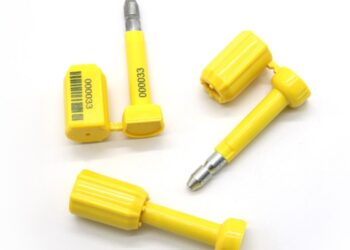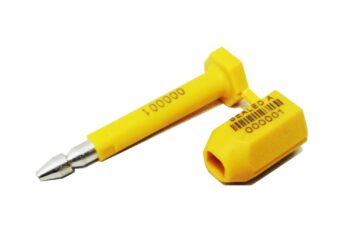ISO 17712 is an international standard that sets out the requirements for mechanical seals used to secure containers in international trade, with the goal of preventing unauthorized access to the contents of containers. These seals come in various security levels, denoted by the letters “H,” “S,” and “C.” Each level represents a different degree of security and tamper resistance. Let’s delve into the differences in requirements for each level:
“H” Level (High Security):
The “H” level represents the highest level of security within the ISO 17712 standard. Seals at this level are designed to withstand rigorous tampering attempts and provide maximum protection against unauthorized access.
The requirements for “H” level seals include:
- Tamper-Evident Features: “H” level seals must possess highly effective tamper-evident features that make any tampering attempt immediately noticeable. These features can include unique markings, color changes upon tampering, and irreversible locking mechanisms.
- Strength and Durability: “H” level seals need to be made from robust materials, ensuring they can withstand attempts at physical manipulation, cutting, and forceful removal. The materials must be resistant to corrosion, extreme weather conditions, and tampering techniques like freezing or heating.
- Security Testing: Manufacturers of “H” level seals must subject their products to rigorous testing, including attempts at tampering, cutting, and other forms of forced entry. The seals must resist these attempts and maintain their integrity.
“S” Level (Security):
The “S” level provides a balance between security and usability, making these seals suitable for a wide range of applications.
The requirements for “S” level seals include:
- Tamper-Evident Measures: “S” level seals must have visible signs of tampering, such as altered colors or markings, if any attempt is made to breach the seal’s integrity.
- Moderate Strength: While not as robust as “H” level seals, “S” level seals should still offer resistance to tampering efforts, such as cutting or pulling. They need to be strong enough to deter casual tampering.
- Reasonable Durability: “S” level seals should be able to withstand normal shipping and handling conditions without becoming compromised.
“C” Level (Indicative):
The “C” level is designed for applications where security is not the primary concern, but the indication of tampering is still important. “C” level seals are often used for domestic shipments or in situations where a higher level of security is not necessary.
The requirements for “C” level seals include:
- Basic Tamper Indication: “C” level seals must show visible signs of tampering if someone attempts to breach the seal. However, these signs might not be as sophisticated or immediately noticeable as those of higher security levels.
- Lower Strength Requirement: “C” level seals are not as strong as their “H” and “S” counterparts. They offer basic resistance against tampering but are not intended to withstand deliberate attacks.
- Usability and Affordability: “C” level seals are often more affordable and user-friendly, making them suitable for scenarios where the highest level of security is unnecessary.
Summary:
ISO 17712 requirements differ for different security levels (“H,” “S,” and “C”) to address varying degrees of security needs. “H” level seals provide the highest level of tamper resistance and durability, “S” level seals strike a balance between security and usability, and “C” level seals offer basic tamper indication for situations where security is less critical. The differences in requirements help businesses and organizations select the appropriate seal based on their specific security and operational requirements.











